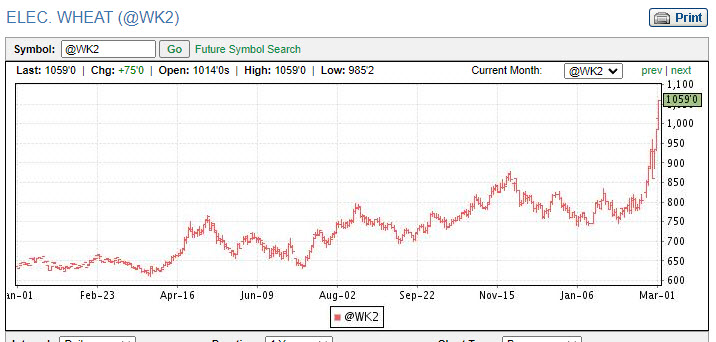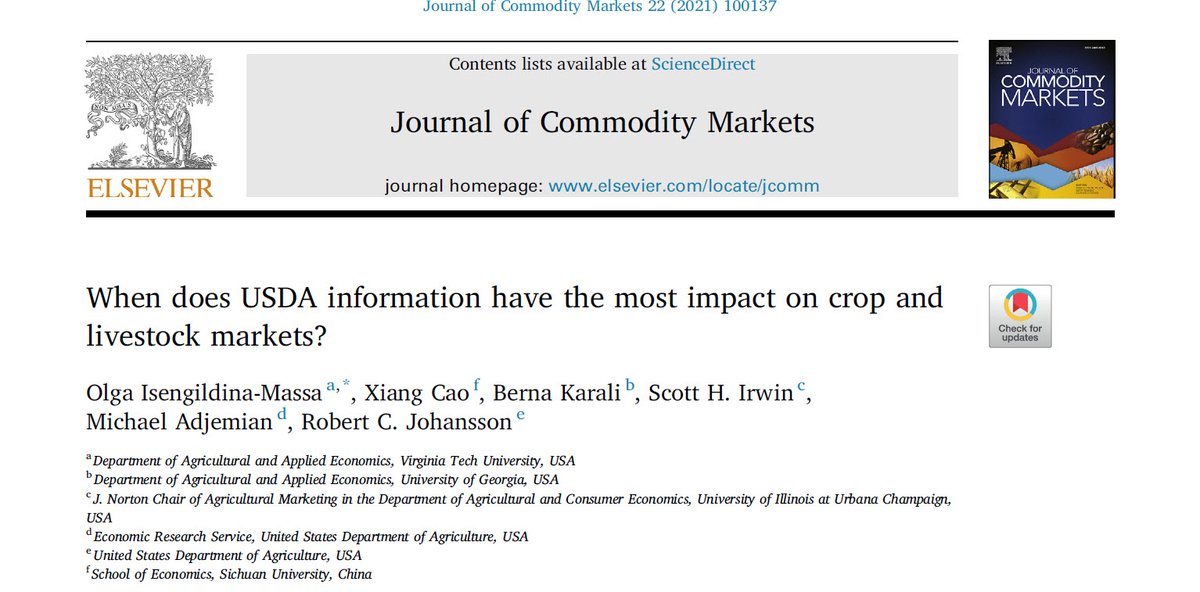
1. Converting Russian crop production into million bushels for 21/22:
Winter wheat: 1,918
Spring wheat: 845.1
Sunflower seed: 1,146.4
Barley: 803.8
Corn: 598.4
Total for 5 crops: 5,311.7
By comparison, Ukraine production for same 5 crops is about 3,700 million bushels
Winter wheat: 1,918
Spring wheat: 845.1
Sunflower seed: 1,146.4
Barley: 803.8
Corn: 598.4
Total for 5 crops: 5,311.7
By comparison, Ukraine production for same 5 crops is about 3,700 million bushels
https://twitter.com/FarmPolicy/status/1501611396479520772
2. Where Russian wheat is produced. Why the Ukrainian and Russian production area is referred to collectively as the "Black Sea production area". 

3. Exports from domestic Russian production are largest for three crops, as projected for 2021/22:
Wheat: 1,175 million bushels
Barley: 206.7 million bushels
Corn: 177.2 million bushels
So, wheat is the big story in Russian grain exports, which is well known by now.
Wheat: 1,175 million bushels
Barley: 206.7 million bushels
Corn: 177.2 million bushels
So, wheat is the big story in Russian grain exports, which is well known by now.
4. What would it take to replace Russian wheat exports on the global market? Assume US average wheat yield of 45bpa. Implies it would take 26.1 million acres of US wheat production to replace Russian production.
5. US wheat area harvested for 21/22 projected to be 37.2 million acres. 26.1/37.2 = 70% of US wheat acreage. And we are a big wheat producer on the global stage. Illustrates how big sanctions effect could be before we consider potential for trade diversion.
6. I like to think about this way. Kansas, the wheat state, is projected to harvest 7 million acres of wheat in 2022. So, it would take almost four Kansas' to replace Russian wheat exports if they are not available to the global markets.
7. Caveat. I am not arguing for the total loss of Russian wheat markets to the global grain trade. Not in the least. There will be trade diversion (re-shuffling of buyers). My numbers are just there to illustrate the scale of diversion that might have to take place.
8. Trade diversion = fancy term from economists for getting around economic sanctions. Highly recommend "The World for Sale" for nitty gritty on how this happens routinely amazon.com/World-Sale-Jav…
9. But even accounting for the "creativity" of the big grain merchants, looks to be a significant loss in the availability of Russian wheat exports to the world market for awhile. How long and how big is the question of the hour.
• • •
Missing some Tweet in this thread? You can try to
force a refresh









